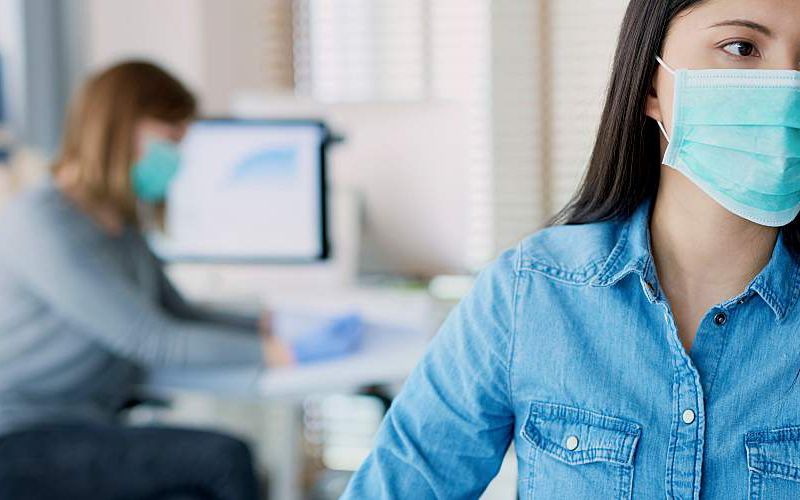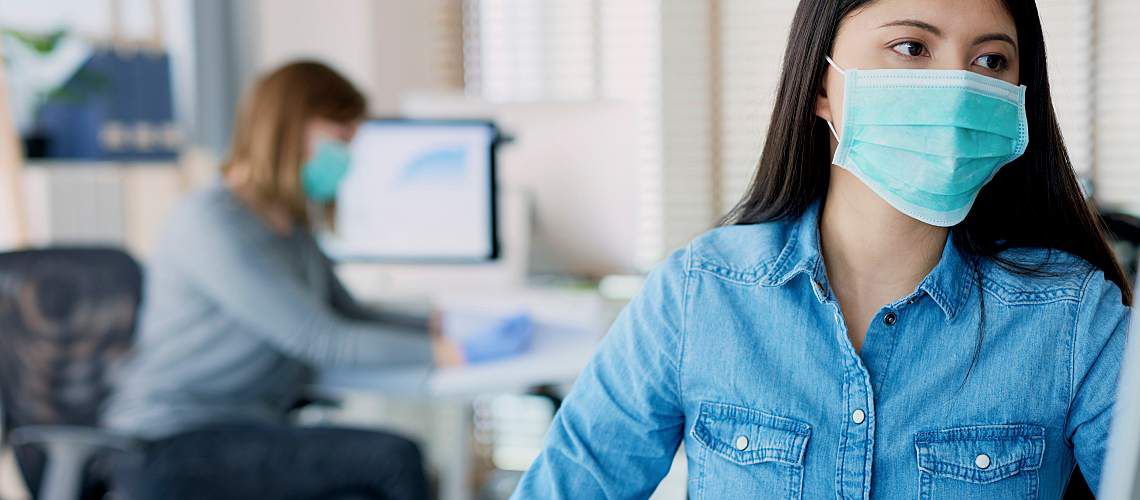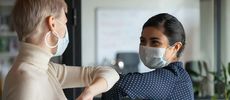Maintaining Workplace Safety in Your Lab as States Reopen during COVID-19


As businesses nationwide reopen amid ongoing COVID-19 outbreaks, many leaders are wondering how to best protect workplace safety when resuming operations. For water testing labs, which have stayed open throughout the pandemic, preventing the spread of the disease remains a top priority as multiple states see spikes in cases. But what safety precautions should your lab be taking? And how can you implement these changes successfully?
The White House has released general guidelines for reopening businesses according to three phases, and individual states such as Massachusetts and California have laid out their own standards and best practices for labs to follow as businesses reopen. These are some of the changes they recommend, as well as some practical tips you can follow to minimize risks and ensure workplace safety at your lab.
Operational and Staffing Considerations
Making operational changes can help curb the spread of illness among your employees. Some steps you'll want to focus on include:
- Continuing telework whenever possible.
- Staggering shifts to reduce worker density.
- Limiting visitors and designating a specific location, preferably outside the lab, for sample drop-offs.
- Restricting office access to only lab personnel.
- Training workers on hygiene protocols.
- Encouraging employees to stay home if they feel sick.
- Asking employees to disclose positive COVID-19 test results.
Knowing when a worker has been exposed to the coronavirus gives you the opportunity to proactively disinfect the lab to prevent further cases. California also recommends temperature and/or symptom screenings for all employees, vendors, contractors, or other parties who visit the lab.
Social Distancing Measures
Whenever possible, ensure at least 6 feet of separation between anyone within or surrounding your lab. Social distancing strategies recommended by the state of Massachusetts include:
- Closing or reorganizing common areas, such as spacing out break room tables.
- Installing partitions 6 feet or higher where workers can't be spaced out.
- Reconfiguring workspaces and high-density areas to allow for 6 feet of distance.
- Requiring employees to wear face coverings.
- Limiting the use of confined spaces, such as elevators and restrooms, to one individual at a time.
Additionally, California recommends:
- Designating separate entrances and exits.
- Adding floor markings or signs to show employees and guests where to stand.
- Creating outdoor break areas.
Depending on your lab's setup, it may be difficult to maintain social distancing. If that's the case, it's important for you to focus on the hierarchy of safety controls recommended by the Centers for Disease Control and Prevention. In order of effectiveness, these include:
- Engineering controls, such as upgrading air filters.
- Administrative controls, such as making all meetings virtual.
- Personal protective equipment, such as face masks and gloves.
Personal Hygiene Recommendations
Practicing good hygiene is critical to prevent COVID-19 transmission. In accordance with the Occupational Safety and Health Administration's workplace safety guidance, your lab should:
- Provide access to hand-washing facilities and/or alcohol-based hand sanitizers.
- Frequently clean and sanitize high-touch areas, including benches, desks, door handles, and bathroom surfaces.
- Distribute cleaning products, such as disinfecting wipes, to workers.
- Post information around the lab on proper hygiene habits and safety protocols.
Massachusetts also points out the need to provide adequate breaks for hand-washing, and that lab workers should avoid sharing materials and equipment such as safety goggles. Additionally, all testing instruments and equipment should be disinfected between uses.
Cleaning and Disinfecting Protocols
Regular cleaning and disinfection efforts can help reduce workplace safety risks at your lab. Massachusetts recommends:
- Cleaning and disinfecting your lab at least daily.
- Maintaining cleaning logs with dates, times, and activities performed.
- Frequently disinfecting high-touch surfaces, such as doorknobs, handrails, elevator buttons, and bathroom surfaces.
- Shutting down for a deep clean in the event of a positive COVID-19 case.
- Adjusting hours to allow for regular deep cleaning of the facility.
Worksite-Specific Plans
California requires all statewide facilities to develop worksite-specific plans to prevent COVID-19 transmission. These plans should:
- Outline steps for assessing the risk of work areas.
- Designate someone to implement the plan.
- Note contact information for local health departments, and steps for contacting them when an employee tests positive for COVID-19.
- Offer guidance on training and communicating the plan.
- Provide investigation procedures for COVID-19 cases and determining whether workplace factors were at play.
- Include strategies for identifying close contacts of infected employees and isolating them from others.
As states reopen, your lab needs to take proactive steps to protect worker safety and ensure business continuity. During this time, it's critical to maintain awareness through proper hygiene, sanitation, and distancing protocols. Communicating safety information with employees helps to keep the issue top of mind and limit the spread of infection. And with a worksite-specific plan, you can ensure all these pieces are in place and, in turn, help minimize business disruptions and new COVID-19 cases.






